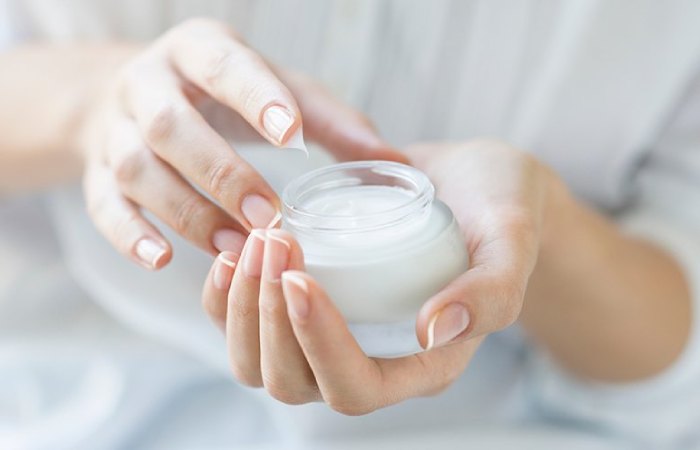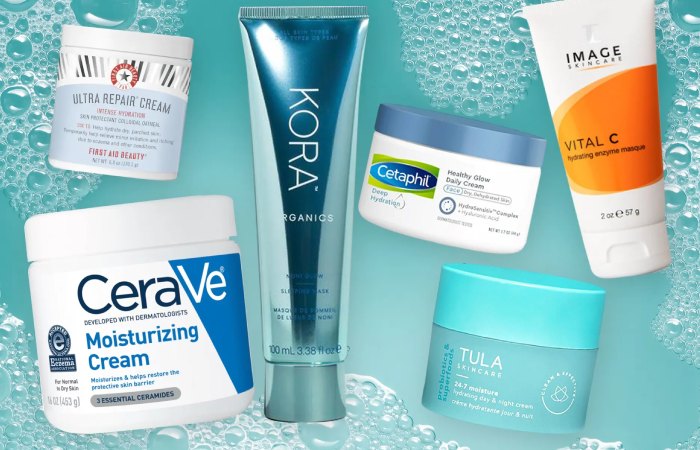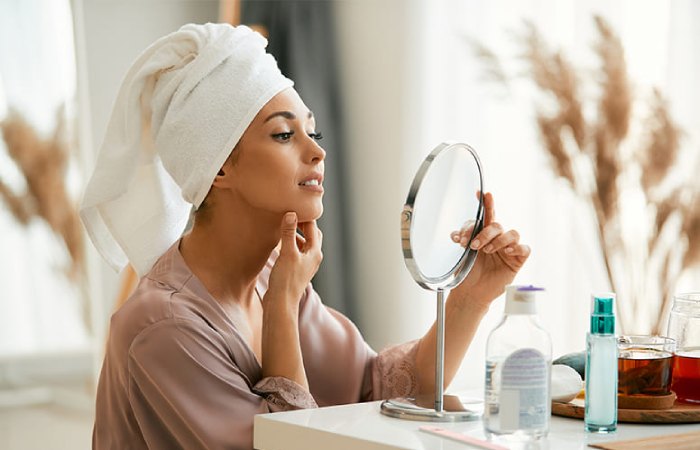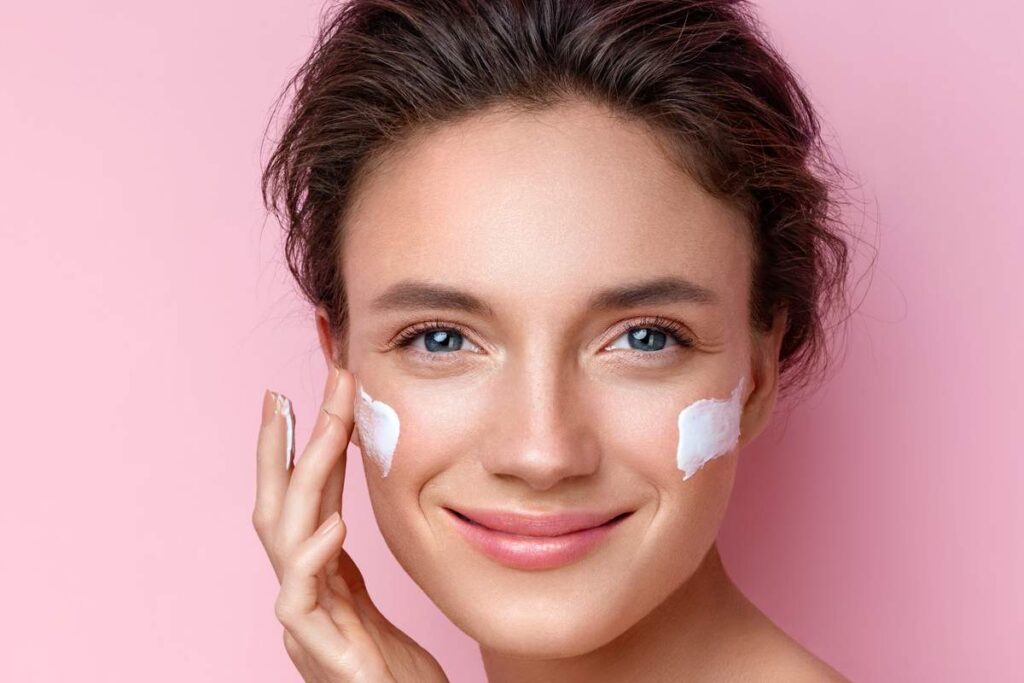What are the two most common ingredients in a good moisturizer? Water and oil. Traditional moisturizers are often too heavy, especially for oily or combination skin. However, hydrating facial gels offer a lighter, more refreshing alternative, providing hydration without a greasy residue. If your current moisturizer leaves your skin oily or causes breakouts, a facial gel moisturizer might be the perfect solution.
Skin 101
The top layer of our skin, named the stratum corneum, should cover at least 10% water to look and feel healthy, although 20 to 30% is ideal. But water, as we know, evaporates easily. This is where other ingredients like emollients, humectants, and occlusives come into play. These ingredients, often made from oil, act as a barrier or sealant to trap moisture in the cells and prevent water from evaporating. A well-hydrated stratum corneum can absorb up to six times its weight in water, plumping the skin. Water also interacts with enzymes to help the skin remove dead cells in an orderly manner. Without water, dead cells build up on the skin, making it red, cracked, and rough. Poorly hydrated skin can develop cracks and cause itching, peeling, and even pain. Therefore, hydration is essential after your daily skin purgative routine, but how do you know which one is best for your skin type? Let’s break it down into two groups of conditioners (gels and creams) and weigh their pros and cons.
What Are Gel Moisturizers?

Moisturizing facial gels are lightweight and water-based (and sometimes oil-free…more on that later). They make a nice, smooth makeup base and feel cool and stimulating when applied to the skin. Moisturizing and absorbing gels with a non-greasy texture are perfect for oily or combination skin that does not necessarily require the addition of topical oil. If your skin is prone to dehydration, the hydrating properties of gel moisturizers make them ideal: they draw water from the surrounding air and draw moisture deeper into the skin, i.e., the dermal layer.
What Are Cream Moisturizers?

Thick and oil-based in composition, creams intensely moisturize, retain moisture better, and have a longer-lasting consequence than gels. They can leave a remainder of the oil, which is not ideal if your skin is already oily. Creams are also often enriched with emollient ingredients such as shea lard and coconut oil, which soothe and soften rough, dry skin. This can be particularly important if you live in an area with long, cold winters.
Which moisturizer is right for your skin type?

Dry Skin
If you have dry skin, oil-free facial gels are probably not your best option. As mentioned above, they are not as effective a barrier against moisture loss as creams. Instead, look for nourishing creams with luxurious emollients, like shea butter, that soften your skin. A good option for daylight is the Lilikoi Daily Protection Moisturizer SPF 40. Formulated with larch, a hydrating ingredient that protects skin from dryness, and antioxidant-rich lilikoi seed oil, this combination of SPF and moisturizer protects and improves the appearance of dry skin. . a stage.
Another great product for dry skin is the Anti-Aging Coconut Moisturizer, which uses coconut water, coconut oil, and shea butter to add moisture. One customer, Diana, reviewed it on the website and said, “The coconut conditioner is amazing… my skin looks countless, and the fine lines are very hard to see.” I love, love, love this line of products.
Oily Skin
While moisturizers are great for dry skin, they are not necessarily the best option for oilier complexions. Lightweight facial gel moisturizers are better options for oily skin, and a good overall option is the Strawberry Rhubarb Hyaluronic Moisturizer. This vegan gel cream contains a botanical hyaluronic acid compound, a blend of hyaluronic acid and marshmallow root that intensely hydrates and locks moisture into the skin. This formula is also composed of vegetable sugars that optimize the skin’s moisture reserve. Another hydrating gel that you can try is the Mangosteen Light Hydrating Gel. It melts into the skin, infusing it with ingredients like mangosteen extract and pore-minimizing red clover flower extract. Mangosteen is a superfruit rich in antioxidants that improve the arrival of the skin and minimize the appearance of environmental stress. Red clover flower extract refines and enhances the complexion to reduce the appearance of pores. This gel also contains ribose (from corn seeds) to promote the appearance of smoother, revitalized skin.
Combination Skin
One strategy is to opt for moisturizing gels for oily parts of the face and moisturizing creams for dry areas. However, if spot treatment on different areas of the face seems a little demanding, Bakuchiol + Niacinamide Moisturizing Cream is a good option for combination and aging skin. In addition to Bakuchiol, a natural alternative to retinol, this moisturizer contains niacinamide, which strengthens the skin barrier, and panthenol, which hydrates and stops moisture loss. Happy customer Emily B. says in an appraisal on our website: “I feel hydrated and glowing all day, AND the consistency feels great under makeup. I’ve been getting salutations on my skin all week!”
Sensitive Skin
Moisturizers with gentle preparations and minimal fragrance should be your choice if you have sensitive skin. Apricot and Calendula Nourishing Cream contains apricot, which replenishes the skin barrier, while flaxseed hydrates, hydrates, and lubricates. Echinacea Revitalizing Recovery Cream is another good option for sensitive skin. Moisturizes with regenerating yarrow herb and evening primrose oil. Or try Calm Skin Chamomile Moisturizer, formulated with calendula oil and grape leaf extract, along with skin barrier-enhancing shea butter and protective sunflower, chamomile, and arnica oil.
Normal Skin
If you don’t have skin problems, choose a gel or ointment that suits your skin’s other needs. You may want a moisturizer with anti-aging ingredients that plump, firm, or revitalize your skin, like Anti-Aging Coconut Moisturizer. For nighttime, Stone Crop Whip Moisturizer will provide deep hydration and nourishment. Remember, you can always choose more than one moisturizer, customizing your routine based on your skin’s changing needs from moment to moment.
The most important thing is to hydrate yourself and use a product adapted to your skin profile. Remember this basic rule: light-as-air gel moisturizers for oily skin and nourishing moisturizers for dry skin. Do you want to know more? Visit your nearest Eminence Organics spa partner for help choosing the best products for your skin.


